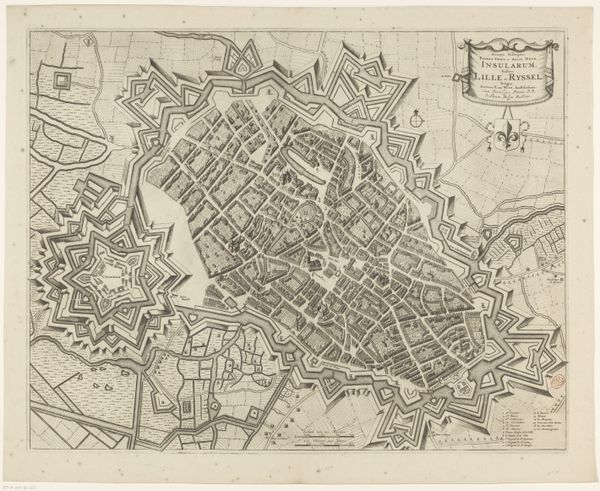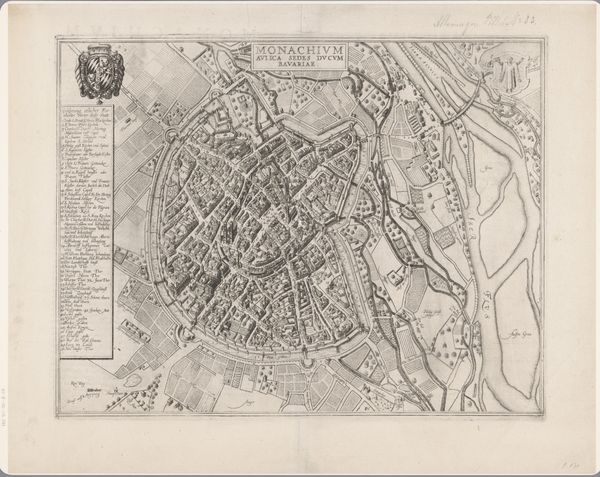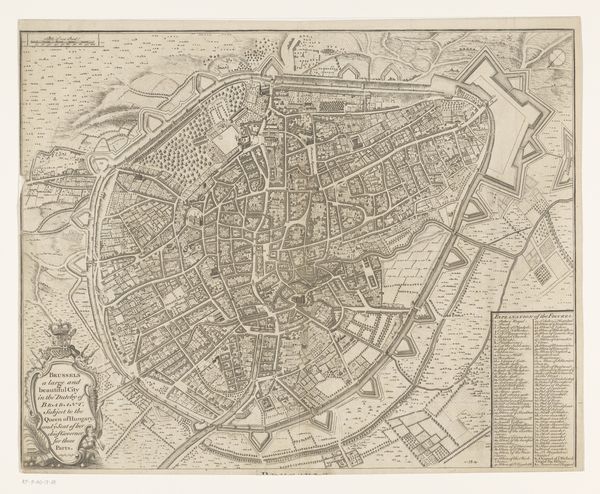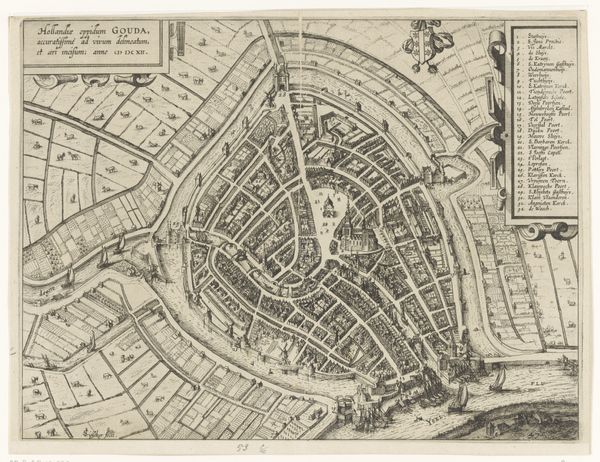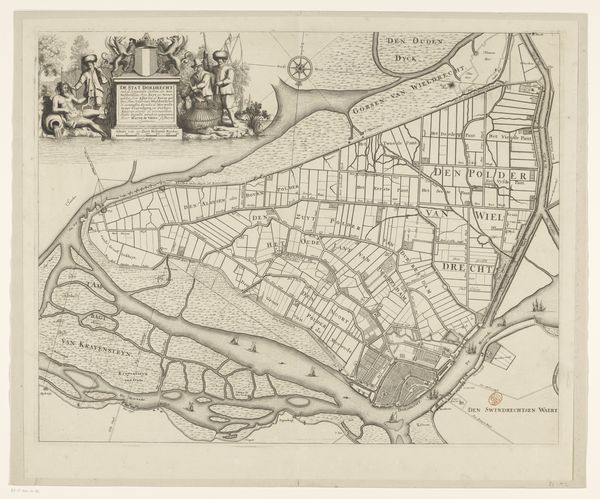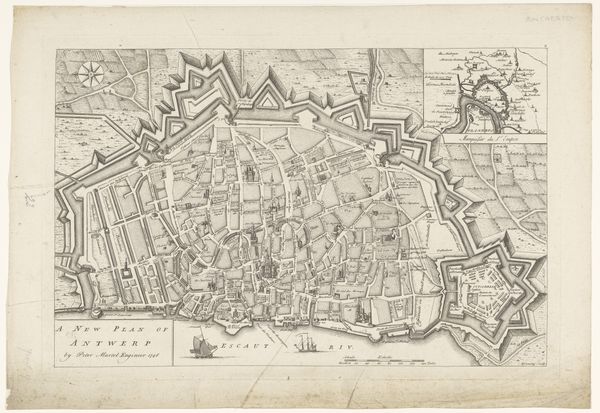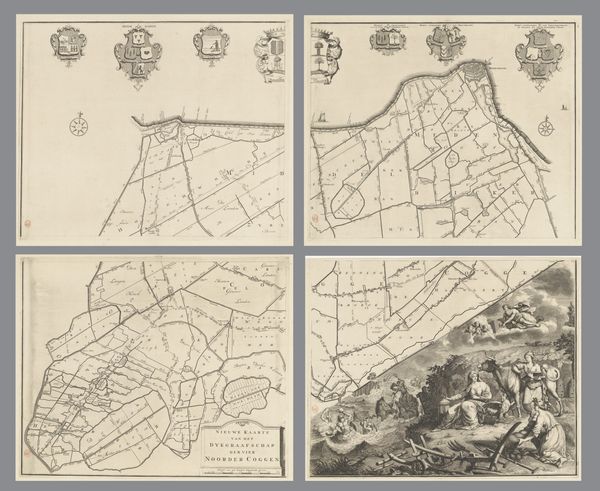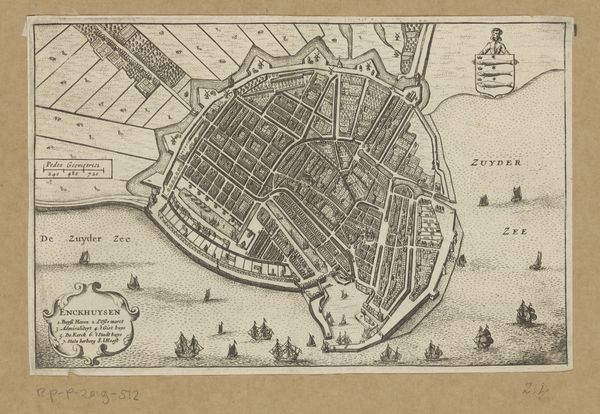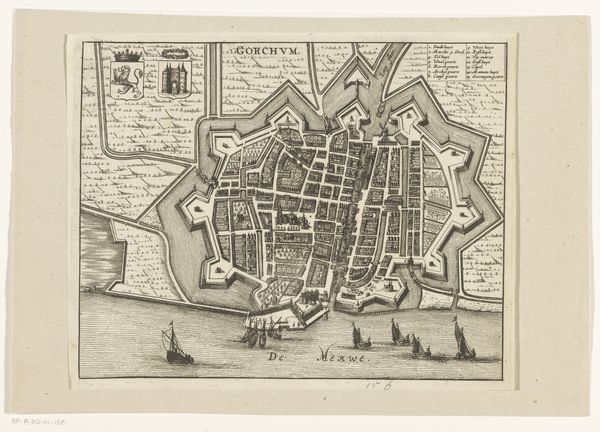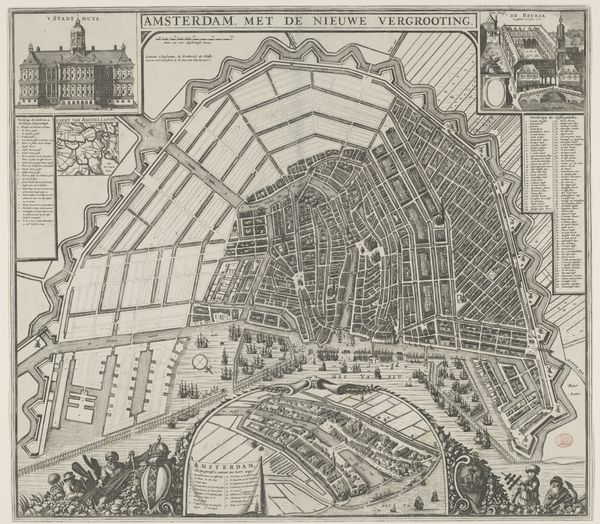
Kaart van de Hondsbossche Zeewering en de duinen bij Petten 1730 - 1731
0:00
0:00
hendrikdeleth
Rijksmuseum
drawing, print, etching, engraving
#
drawing
#
dutch-golden-age
# print
#
etching
#
landscape
#
cityscape
#
engraving
Dimensions: height 676 mm, width 890 mm
Copyright: Rijks Museum: Open Domain
Editor: Here we have "Kaart van de Hondsbossche Zeewering en de duinen bij Petten," a drawing from around 1730 by Hendrik de Leth. It seems to be a map of a coastal area, rendered in meticulous detail with what looks like etching and engraving. It has a stark, almost architectural feel to it. What strikes you most when you look at the composition of this piece? Curator: Initially, I observe the deliberate construction. Note the organization of space: the upper register presenting heraldic symbols, the compass rose; below that, the rendering of the land itself. The varying densities of linework are significant; dense clusters describe the urban areas, while a more sparse treatment denotes the rural, thereby delineating territories. How do these variations inform your understanding of spatial relationships? Editor: So, the density of the lines visually signifies population density, perhaps implying a certain social structure? The areas look distinctly planned. Curator: Precisely. Consider also the lines not merely as descriptive tools, but as formal elements constructing a system of signs. Observe how the straight lines and geometric forms dominate, creating a sense of order. The visual syntax reveals the human imposition upon the landscape. Do you perceive any elements that disrupt this structured view? Editor: The sea, maybe? Its texture is subtly different, with less definition. Also, there’s an oddly informal vignette in the lower corner that contrasts sharply with the map's rigid structure. Curator: An interesting observation! Indeed, the less defined treatment of the sea and the vignette provide counterpoints within the formal arrangement. The etching creates an engagement in duality, suggesting a negotiation between order and natural irregularity. Do you see now the intention of lines as the building block of this image? Editor: I do! I was caught up in the representational aspect, but now I see how the formal qualities, the lines and shapes themselves, are actively shaping the meaning. Curator: And in seeing that, we move beyond a literal reading and delve into the structural integrity of this 18th-century visual language.
Comments
No comments
Be the first to comment and join the conversation on the ultimate creative platform.
